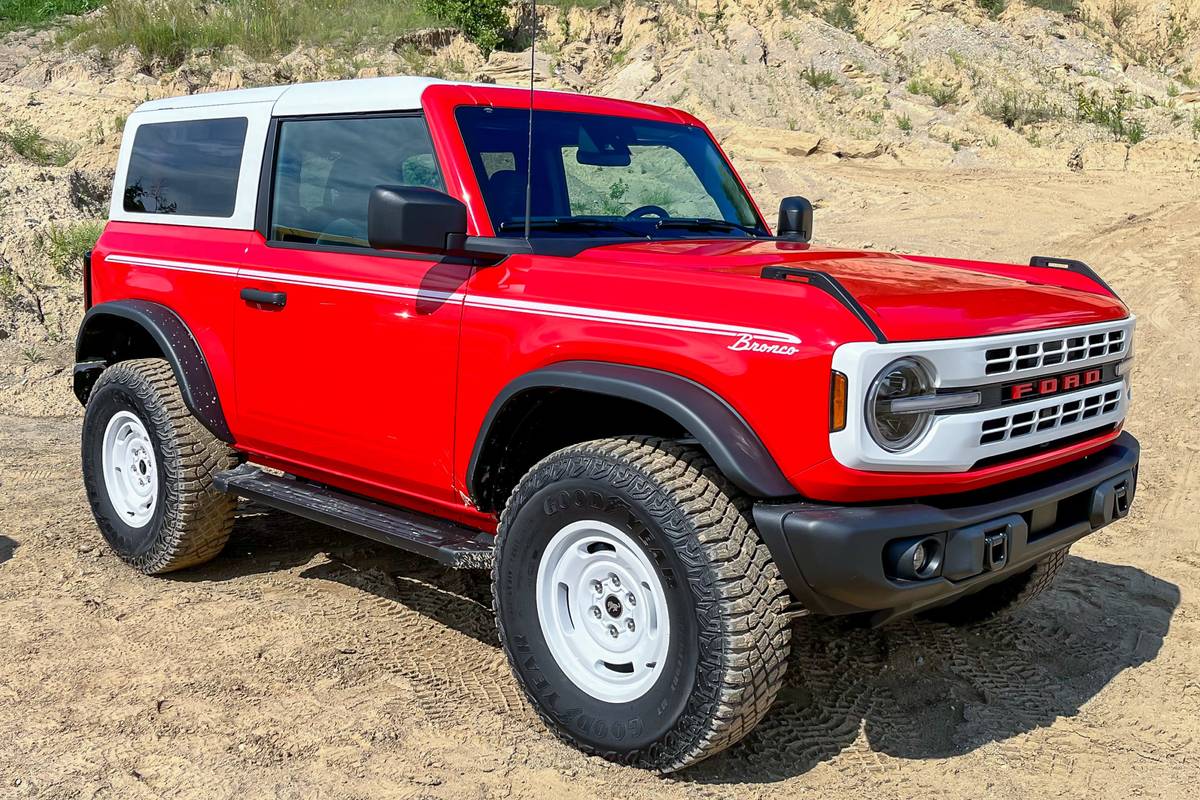The Morning Call and Mcall.com's view
The all-new 2003 4Runner addresses the unmet expectations of the current 4Runner.
This is something that Toyota has mastered: incremental improvements that make a big difference overall.
For starters, Toyota has increased the 4Runner’s size. A new ladder-type chassis yields a 4.5-inch increase in wheelbase and 5.7 additional inches in length. This translates into a roomier interior with a more spacious feel than the current 4Runner.
The melted-edges look of the 2002 4Runner has given way to a more rugged, square design. The distinctive horizontal grille mimics that of the new Tundra pickup. The rest of the design is more sedate, yet quite handsome. Still, the vehicle failed to turn many heads, despite being a new design.
The 4Runner is available in three trim levels, base SR5, mid-level Sport Edition and top-of-the-line Limited, in either rear-wheel- or four-wheel-drive. The all-new Sport Edition was provided by Toyota for testing.
Toyota’s standard engine is a new all-aluminum V-6 that dispenses 245 horsepower and 282 foot-pounds of torque. A 4.7-liter iForce V-8 is optional on all models and delivers less horsepower – 235 hp – but greater torque, 320 foot-pounds. A four-speed automatic is standard with the V-6; a five-speed automatic is standard with the V-8.
After sampling the V-6, you may not want to spring for the V-8. Power is strong and the engine dishes out just enough noise to let you know it’s working. Better yet, fuel economy is quite good for a 4,320 pound SUV, returning almost 18 mpg in mixed driving.
All four-wheel-drive models have a two-speed transfer case with shift-on-the-fly capability. The four-wheel-drive system can be used on any type of road, including dry ones. Under normal conditions, Toyota’s system sends more torque to the rear wheels, in a 40 percent front/60 percent rear split. When the front wheels slip, up to 71 percent of power can be sent to the rear wheels. When the rear wheels slip, up to 53 percent of the power goes to the front.
In addition, Toyota has added a number of electronic traction aids.
Electronic traction control, Vehicle Skid Control and four-wheel anti-lock disc brakes are standard. Braking systems also incorporate Brake Assist and Electronic Brakeforce Distribution to ensure straight, short stops in panic situations.
All 4Runners come with Hill-start Assist Control. HAC is designed to help prevent the vehicle from rolling backwards when starting from a stopped position.
All four-wheel-drive 4Runners add Downhill Assist Control. DAC uses wheel-mounted speed sensors to employ engine braking on steep or slippery surfaces. It’s activated by a console-mounted button.
The electronic systems work invisibly, leaving a driver with the impression that the drive and handling are at the top of the class. The 4Runner ably absorbs bumps, yet never smothers them so much that you forget that you’re in a truck. However, the bouncy, teeth-chattering ride has been banished. The vehicle’s capability off-road is superb, where electronic aids really help.
Handling is easy and car-like. The turning diameter is a short 36.7 feet. Stops were short and sweet, but the brake pedal felt a bit mushy. Cornering is much more agile than you’d expect.
Inside, a three-pod instrument cluster has a sporty theme that accents the dashboard with a silver-toned finish. The instrument readings are legible, although some may object to the orange-colored lighting.
A sensor detects when the vehicle is on a slope and adjusts the fuel gauge reading. The AM/FM/cassette/CD system is easy to operate, and there are redundant radio controls on the steering wheel. A trip computer is mounted just below the radio.
Three, round, toggle switches operate the standard climate control system. They look odd, but are easy to use.
The center console ho es a large storage bin that incorporates a coin holder and flip-open writing surface. Dual sun visors are provided, but vanity mirrors were notable in their absence. The door pockets have bottle holders in addition to the standard cupholders throughout the cabin.
Front cloth bucket seats were comfortable and supportive. While not mounted as low as the ones on previous 4Runners, the seats were still on the low side. Power seats with leather and seat heaters are available on the Limited. A tilt/telescopic steering wheel makes it easy to find a comfortable driving position.
Rear seating was still mounted quite low, making long trips uncomfortable for long-legged drivers. The rear seats are 60/40 split-folding with three headrests that do not have to be removed before folding.
The cargo area is spacious and the rear hatch features a power window that can be opened from the key fob, but not closed.
The test vehicle featured a $100 optional double-decker cargo system with cargo net. This adds considerable versatility to the cargo space. It allows you to stash a flat item on top with the aid of a cargo net while bulkier items store below. The whole system folds flat when not in use.
Other helpful items are the two convex mirrors mounted on the inside rear posts of the cargo area. This allows the driver to view an area outside the vehicle that they otherwise wouldn’t see.
A towing hitch with seven-pin electrical connector is standard. Towing capacity in all trim levels is 5,000 pounds.
Price for a rear-wheel-drive SR5 model is $27,205. The four-wheel-drive Sport model started at $31,275. A power moonroof, running boards, a cargo system, rear spoiler, daytime running lights and floor mats brought the total up to $33,554. A fully-loaded Limited starts at $35,680 and bottom lines around $40,000.
What the 4Runner represents is Toyota’s best thinking on a mid-sized SUV. With many little and big improvements, the 4Runner should prove more popular than ever, and it represents a must-drive on any SUV buyer’s list of choices.
Latest news



